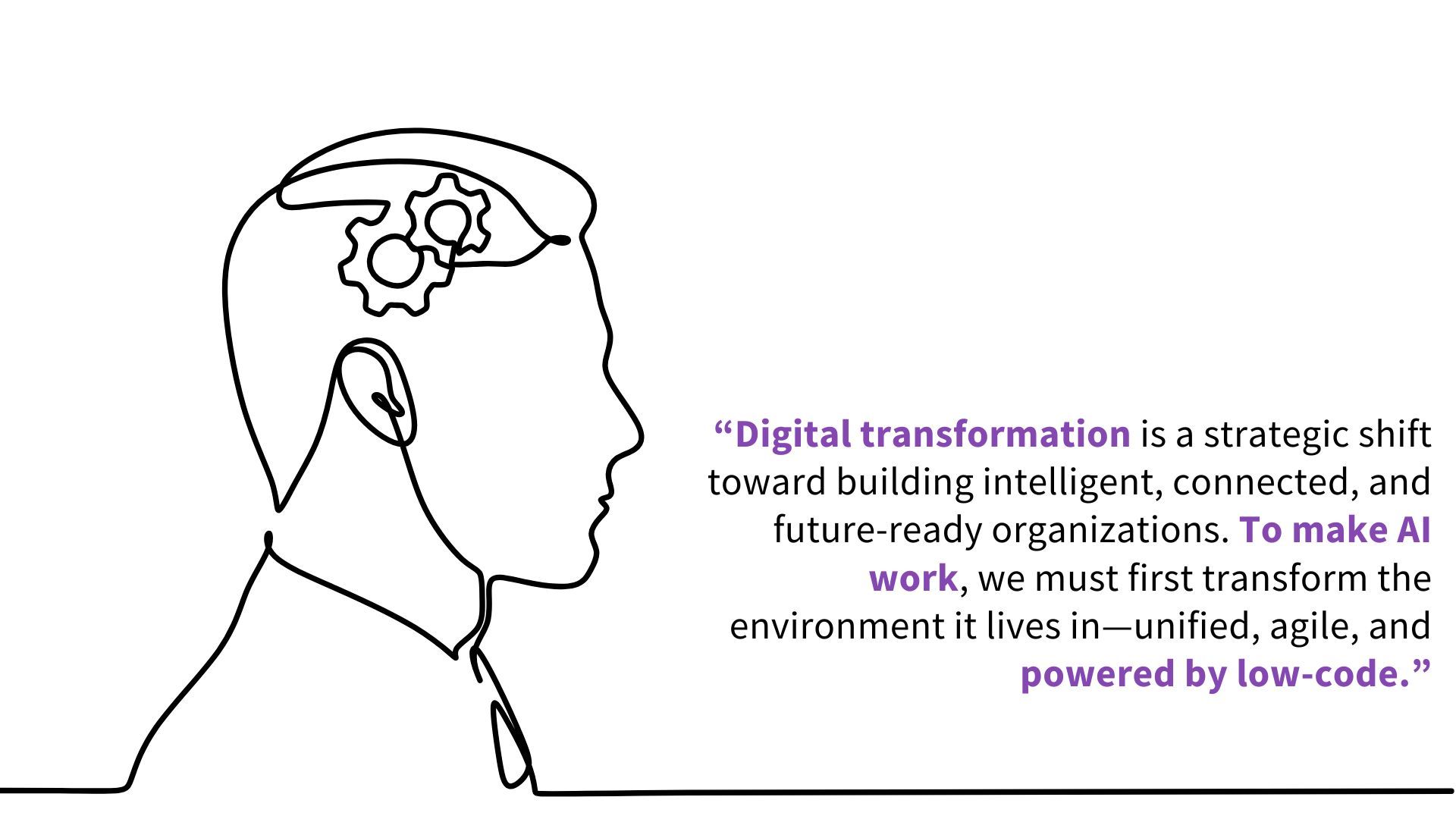Why Digital Transformation Matters
The Strategic Imperative for Modern Businesses
31 Mart 2025 , Blog
Digital transformation is a strategic imperative for businesses. Whether driven by the pressure of disruptive start-ups, board directives, evolving customer expectations, or the pursuit of operational excellence, organizations are increasingly recognizing the need to evolve—or risk becoming obsolete. But digital transformation isn’t just a tech upgrade. It’s a comprehensive reimagining of how organizations operate, deliver value, and prepare for the future.
This blog post explores why digital transformation matters, how to approach it strategically, and the critical role it plays in workplace evolution, employee engagement, and talent acquisition.
Understanding the Need for Transformation
Digital transformation is a response to a rapidly changing business environment where agility, speed, and customer-centricity are non-negotiable. For some organizations, transformation is a defense mechanism—to keep pace with nimble start-ups that operate with digital-first mindsets. For others, it’s the result of pressure from internal stakeholders or external market demands.
Beyond reacting to disruption, transformation offers tangible business benefits: increased speed-to-market, improved customer satisfaction, enhanced profitability, and better decision-making. However, embarking on a digital transformation journey requires more than just enthusiasm—it requires a plan.

Begin With a Blueprint
Every successful digital transformation begins with two critical steps: mapping your current ecosystem and defining your strategic objectives.
Before you leap into change, you need a clear understanding of where you stand:
What technologies are currently in use across departments
Which processes are outdated, manual, or inefficient?
Are your digital tools aligned with your business goals—or working in silos?
Can your systems talk to each other, or are you operating in fragmentation?
Is your digital ecosystem capable of supporting next-generation tools like business AI?
Mapping your ecosystem helps you visualize your digital reality—uncovering gaps, overlaps, and areas of opportunity.
Defining your objectives gives you direction—whether that’s improving agility, enhancing customer experience, or becoming truly data-driven.
Together, this forms the blueprint for transformation. Without it, you’re navigating without a compass. With it, you're ready to build a future-proof organization powered by intelligence, integration, and intention.
What is your true aim in digital transformation?
Being ready for the future—with a digital foundation that’s agile, scalable, and future-proof.
Creating a fully connected digital ecosystem—where data flows seamlessly, and every department operates in sync.
Transforming with AI—not just to automate tasks, but to unlock smarter decisions, proactive insights, and real business acceleration.
Empowering your workforce—so they become faster, more productive, and spend their energy on what truly matters.
Reducing IT burden and vendor dependency—by eliminating tool sprawl and building autonomy through integrated, low-code platforms.
This isn’t just about digitalization. It’s about reshaping how your organization operates, adapts, and grow.
So ask yourself: Are you chasing tools? Or are you building a smarter, stronger business?
Why Technology Alone Isn’t the Answer
True digital transformation isn’t about piling on technology—it’s about creating digital cohesion.
It requires a well-orchestrated, strategic approach where every digital initiative aligns with a greater purpose. Without that unity, even the most cutting-edge technologies can fall flat, delivering little value.
Transformation succeeds when strategy, people, and purpose work in harmony—with technology as the enabler, not the driver.
Modern IT is no longer about collecting tools—it’s about building a connected digital ecosystem. Moving everything into a single platform only makes sense if those systems are truly integrated and working as one. Otherwise, disconnected tools lead to inefficiencies, fragmented data, and poor user experiences.
Future-Proofing Your Business
Perhaps the most compelling reason to invest in digital transformation is future readiness. The pace of innovation is no longer linear—it’s exponential. Emerging technologies such as AI, machine learning, blockchain, and edge computing are reshaping industries, processes, and business models at an unprecedented speed.
Organizations that fail to adapt now risk irrelevance. But future-proofing your business doesn’t mean blindly adopting every new tool. It means taking a deliberate approach: building a connected, scalable digital foundation that empowers your people, supports your goals, and allows you to evolve continuously.
Digital transformation is not about technology for its own sake—it’s about building resilient, adaptable organizations that can thrive amid constant change. It allows businesses to:
Break down silos and unify operations
Create seamless customer and employee experiences
Optimize workflows and unlock operational efficiency
Enable data-driven decision-making at every level
It’s also the foundation for meaningful AI transformation. Without integrated systems, connected data, and adaptive workflows, AI cannot reach its full potential. AI is often seen as a shortcut to innovation—but in reality, AI is only as effective as the environment it operates within.
To leverage AI successfully, organizations need:
Clean, structured, and connected data
Integrated platforms that allow AI to work across departments
Automated workflows that AI can enhance
Real-time feedback loops that AI can learn from
This is why digital transformation must come first. It’s the infrastructure that gives AI the context, continuity, and clarity it needs to deliver real impact.
On the other hand, traditional IT development cycles can’t keep up with the speed of today’s business demands. That’s where low-code platforms come in.
Low-code empowers organizations to:
Build and iterate digital solutions faster
Reduce IT workload and eliminate vendor dependency
Empower business users to adapt processes without code
Launch and scale AI applications with agility
That means:
Building a flexible digital foundation
Embracing AI with purpose and clarity
Designing systems that grow with your business
Fostering a culture of agility, innovation, and continuous learning
Start by mapping your digital ecosystem.
Define your transformation objectives.
Invest in integrated, low-code platforms.
Empower your people.
And most importantly—keep reassessing.
It’s the new way of doing business.
